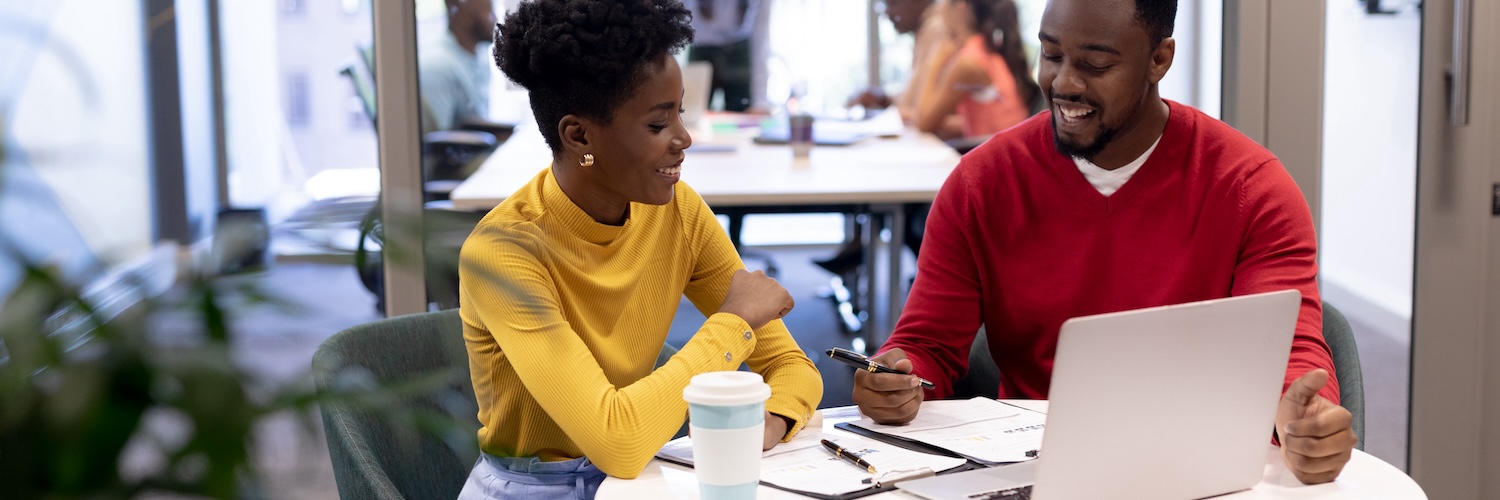Taking the opportunity to learn when we face times of change, challenge or even adversity in our working lives can differentiate how we manage to cope or thrive whatever comes our way. The internet is buzzing with advice on resilience, particularly after the last two years, as we have all lived through such an extraordinary time. In our experience, whether your organisation has thrived through the last year or has faced significant challenges, all have been forced to adapt and change.
Resilience is one part of the solution and is mostly associated with ‘bounce back’ – the ability to come back even stronger after adversity. Most definitions of resilience require adversity to have happened before you know whether you have it, or not. Moving forwards, what we really need is the ability to thrive, to handle anything that comes our way, whether we have faced difficulty already, or not. Building our “resilience muscle” requires an ability to positively manage the challenges that come our way at work, to have the stamina to keep going, to be open, adaptable and agile to change and to have a determination to rise up and succeed. This “muscle” is one we can call on whenever we need it, made ready for those challenging times and activated in those moments.
Our ability to become resilient is wrapped up in our mindset, where we advocate resourcefulness, have confidence in a positive future, learn from others to build skills and harness a belief that what we do matters. Determination, a sense of unity and collaboration have all helped to see us through some of the obstacles in our path, largely through a belief that many of these changes are temporary.
The importance of mindset, language and actions for long-term staying power
Our customers are telling us that some of the greatest challenges are connected with helping their people adjust to new ways of working, new processes and new policies – in a workplace that will continue to change for the foreseeable future. Some of these changes may be permanent while others will continuously evolve. How, then, do we make sure we keep our people moving forward? How do we support them to stay focused on their goals and even to strive for more stretching achievements?
The interplay between mindset and the language and actions we use to communicate it, is a good place to start. A conscious decision to build a mindset that takes ownership and responsibility for influencing outcomes, that is resolutely optimistic, that values the learning that feedback brings and that believes in the value that we bring to the people around us can be a driving force for the actions we go on to take. Assessing the situation and understanding what we can control or influence puts us back into the driving seat. And for events that are completely out of our control, managing our response and letting go provides a sense of achievement and progress.
This mindset contributes to greater openness to experience, a characteristic that keeps us creative, curious and more able to accept change as we learn and thrive. These are key aspects of resilience muscle and help to equip us to rise to other challenges that come our way, embracing today’s uncertainty as a chance for future opportunity and growth.
Keeping positive and thinking about the opportunities of our new working lives, appreciating what is good and using positive language to communicate with colleagues is the way we can demonstrate our mindset to bring others along with us, so we can collaborate and keep others motivated too. By reframing and reordering our messages starting on the positive or constructive rather than the negative, we influence ourselves and others to keep making progress. In this way we build preparedness and the capability to cope with anything that comes our way.
How can we help?
Find out how our psychology-based employee training programmes can help your people to build their resilience muscle. Our practical tools and strategies and our validated and embedded training methods are created by a team of experts in the fields of social sciences and organisational psychology. Find out more here.
Read our latest articles
Explore our latest blogs, written on topics to help you and your people thrive at work.

Connect with us
Ready to discover what we can do for you?






